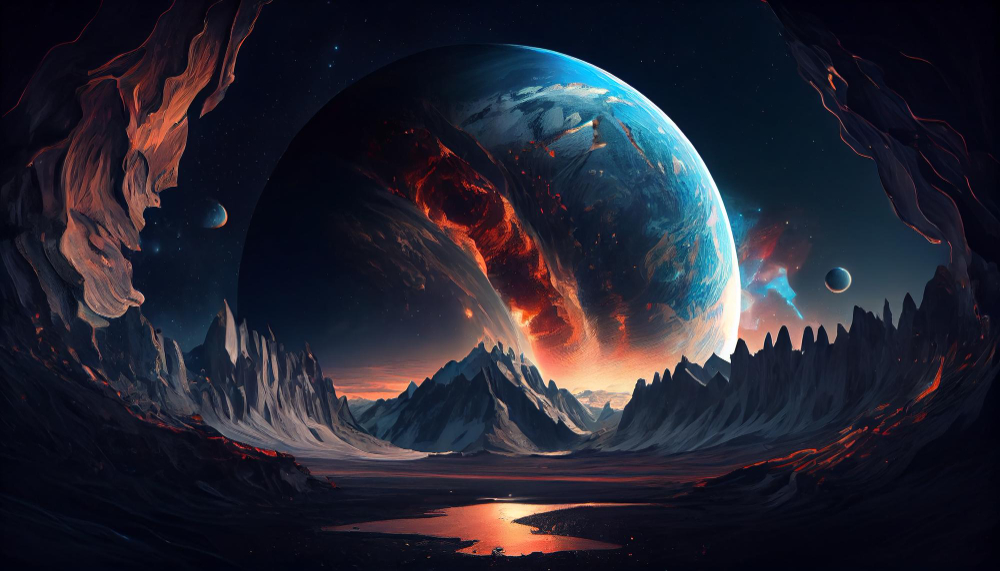Spectacular Berigalaxy: Unveiling The Cosmic Wonders
What is berigalaxy? It is a vast and mysterious realm, home to countless stars, planets, and other celestial objects. It is a place of wonder and beauty, but also of danger and mystery.
The berigalaxy is made up of billions of stars, each of which is a giant ball of hot gas that emits its own light and heat. The stars are organized into galaxies, which are vast collections of stars, gas, and dust. Our own solar system is located in the Milky Way galaxy, which is just one of billions of galaxies in the berigalaxy.
The berigalaxy is constantly evolving. Stars are born, live, and die, and new galaxies are constantly being formed. The berigalaxy is also home to a variety of other celestial objects, including planets, moons, asteroids, and comets. These objects are all part of the complex and fascinating web of life that makes up the berigalaxy.
berigalaxy
The berigalaxy is a vast and complex place, but it can be understood by breaking it down into its key aspects. These aspects include:
- Stars: The berigalaxy is made up of billions of stars, each of which is a giant ball of hot gas that emits its own light and heat.
- Galaxies: Stars are organized into galaxies, which are vast collections of stars, gas, and dust. Our own solar system is located in the Milky Way galaxy, which is just one of billions of galaxies in the berigalaxy.
- Planets: Planets are smaller than stars and do not emit their own light. They orbit stars and reflect their light.
- Moons: Moons are smaller than planets and orbit planets. They reflect the light of the stars that they orbit.
- Asteroids: Asteroids are small, rocky objects that orbit the sun. They are too small to be considered planets, but they are too large to be considered dust.
- Comets: Comets are small, icy objects that orbit the sun. They have a long, tail of gas and dust that trails behind them.
berigalaxy
The berigalaxy is a vast and mysterious place, but it is also a place of great importance and beauty. The berigalaxy is home to our solar system, which is where we live. It is also home to billions of other stars and planets, some of which may be habitable. The berigalaxy is a source of wonder and inspiration, and it is a reminder of our place in the universe.
berigalaxy
The berigalaxy is a vast and mysterious place, but it is also a place of danger and mystery. The berigalaxy is home to a variety of hazards, including radiation, asteroids, and comets. These hazards can pose a serious threat to human space exploration.
- Nina Aouilk Mother
- Alysha Clark Dating
- Maligoshik Leak Of
- George Clooney Twins Photos 2024
- Does Douglas Murray Have A Partner
Despite the challenges and risks, the berigalaxy is a place of great importance and beauty. It is home to our solar system, which is where we live. It is also home to billions of other stars and planets, some of which may be habitable. The berigalaxy is a source of wonder and inspiration, and it is a reminder of our place in the universe.
berigalaxy
The berigalaxy is a vast and mysterious realm, home to countless stars, planets, and other celestial objects. It is a place of wonder and beauty, but also of danger and mystery. The berigalaxy is a vast and complex place, but it can be understood by breaking it down into its key aspects.
- Stars: The building blocks of galaxies.
- Galaxies: Vast collections of stars, gas, and dust.
- Planets: Smaller than stars, orbiting stars.
- Moons: Smaller than planets, orbiting planets.
- Solar System: Our home in the berigalaxy.
These key aspects are all interconnected and interdependent. Stars form galaxies, galaxies contain planets, planets have moons, and our solar system is located in a galaxy. The berigalaxy is a complex and dynamic system, and these key aspects are all essential to its functioning.
Stars
Stars are the fundamental units of galaxies. They are giant balls of plasma that emit light and heat through nuclear fusion reactions. Stars are born when large clouds of gas and dust collapse under their own gravity. As the cloud collapses, it begins to rotate, and the material in the center of the cloud becomes increasingly dense and hot. Eventually, the temperature and pressure in the center of the cloud become so great that nuclear fusion reactions begin to occur. These reactions release enormous amounts of energy, which causes the star to shine. The mass of a star determines its size, color, and lifespan. More massive stars are hotter and bluer than less massive stars, and they also have shorter lifespans.
Stars are the building blocks of galaxies. They provide the energy that powers galaxies, and they are the source of the elements that make up galaxies. Stars also play a role in the formation of planets and other celestial objects.
The berigalaxy is home to billions of stars. These stars are organized into galaxies, which are vast collections of stars, gas, and dust. The Milky Way galaxy, which is home to our solar system, is just one of billions of galaxies in the berigalaxy. Stars are the fundamental units of galaxies, and they play a vital role in the formation and evolution of galaxies.
Galaxies
Galaxies are vast collections of stars, gas, and dust that are gravitationally bound together. They are the largest known structures in the universe, and they contain billions or even trillions of stars. Galaxies come in a variety of shapes and sizes, from small, irregular galaxies to large, spiral galaxies like our own Milky Way. Galaxies are also classified by their morphology, which is based on their visual appearance.
- Structure and Formation: Galaxies are formed when large clouds of gas and dust collapse under their own gravity. As the cloud collapses, it begins to rotate, and the material in the center of the cloud becomes increasingly dense and hot. Eventually, the temperature and pressure in the center of the cloud become so great that nuclear fusion reactions begin to occur. These reactions release enormous amounts of energy, which causes the galaxy to shine. The mass of a galaxy determines its size and shape. More massive galaxies are larger and more luminous than less massive galaxies.
- Components: Galaxies are made up of a variety of components, including stars, gas, dust, and dark matter. Stars are the most visible component of galaxies, but they actually make up only a small fraction of the total mass of a galaxy. Gas and dust are also important components of galaxies, as they provide the raw materials for new star formation. Dark matter is a mysterious substance that does not emit or reflect any light, but it is thought to make up the majority of the mass of galaxies.
- Types: Galaxies are classified into four main types: elliptical, spiral, lenticular, and irregular. Elliptical galaxies are round or oval in shape, and they have a smooth, featureless appearance. Spiral galaxies have a flat, disk-like shape, with a central bulge surrounded by a spiral pattern of arms. Lenticular galaxies are similar to spiral galaxies, but they have a less prominent spiral pattern. Irregular galaxies have no regular shape, and they are often the result of mergers between other galaxies.
- Evolution: Galaxies evolve over time through a variety of processes, including mergers, interactions with other galaxies, and the formation of new stars. Mergers between galaxies can create larger galaxies, and they can also trigger bursts of star formation. Interactions between galaxies can also lead to the formation of new stars and the disruption of existing stars. The formation of new stars is an ongoing process in galaxies, and it is essential for the continued evolution of galaxies.
Galaxies are the basic building blocks of the universe. They are home to stars, planets, and other celestial objects, and they are the sites of ongoing star formation and evolution. Galaxies are also important for understanding the history and evolution of the universe.
Planets
Planets are smaller than stars and orbit stars. They are made up of rock and gas, and they do not emit their own light. Planets are found in all shapes and sizes, and they can be located anywhere in a star system. Some planets are very close to their star, while others are very far away. The distance between a planet and its star affects its temperature and atmosphere.
- Role of Planets: Planets play an important role in the berigalaxy. They provide a stable environment for life to evolve. Planets also help to regulate the temperature of their star systems.
- Examples of Planets: There are many different types of planets in the berigalaxy. Some of the most common types of planets include terrestrial planets, gas giants, and ice giants. Terrestrial planets are made up of rock and metal, and they are similar in size to Earth. Gas giants are made up of gas, and they are much larger than terrestrial planets. Ice giants are made up of ice and rock, and they are smaller than gas giants.
- Implications for the Berigalaxy: The presence of planets in the berigalaxy has a number of implications. First, it suggests that the berigalaxy is a habitable environment. Second, it suggests that the berigalaxy is a place where life could evolve. Third, it suggests that the berigalaxy is a place where intelligent life could evolve.
The study of planets is a relatively new field, but it is already providing us with valuable insights into the berigalaxy. By studying planets, we can learn more about the formation and evolution of the berigalaxy. We can also learn more about the possibility of life beyond Earth.
Moons
Moons are smaller than planets and orbit planets. They are made up of rock and ice, and they do not emit their own light. Moons are found in all shapes and sizes, and they can be located anywhere in a planetary system. Some moons are very close to their planet, while others are very far away. The distance between a moon and its planet affects its temperature and atmosphere.
Moons play an important role in the berigalaxy. They provide a stable environment for life to evolve. Moons also help to regulate the temperature of their planetary systems. Additionally, moons can be a source of resources, such as water and minerals.
The presence of moons in the berigalaxy has a number of implications. First, it suggests that the berigalaxy is a habitable environment. Second, it suggests that the berigalaxy is a place where life could evolve. Third, it suggests that the berigalaxy is a place where intelligent life could evolve.
The study of moons is a relatively new field, but it is already providing us with valuable insights into the berigalaxy. By studying moons, we can learn more about the formation and evolution of the berigalaxy. We can also learn more about the possibility of life beyond Earth.
Solar System
The solar system is a gravitationally bound system of the Sun, eight planets, dwarf planets, and many moons, asteroids, comets and meteoroids. It is located in the Milky Way galaxy.
The solar system is thought to have formed about 4.6 billion years ago from the collapse of a giant molecular cloud. The Sun is a G-type main-sequence star that makes up 99.86% of the mass of the solar system. The planets are divided into two groups: the inner planets and the outer planets. The inner planets are Mercury, Venus, Earth, and Mars. They are made mostly of rock and metal.
The outer planets are Jupiter, Saturn, Uranus, and Neptune. They are made mostly of gas and ice. The solar system also contains dwarf planets, such as Pluto and Eris. Dwarf planets are smaller than planets but larger than asteroids. The solar system is also home to many moons, asteroids, comets, and meteoroids.
The solar system is a complex and dynamic system. The planets orbit the Sun in elliptical paths. The Sun's gravity keeps the planets in orbit. The planets also rotate on their own axes. The rotation of the planets causes day and night.
The solar system is a fascinating place. It is home to a wide variety of planets, moons, and other objects. The solar system is also a place of great scientific interest. Scientists are studying the solar system to learn more about its formation and evolution.
Frequently Asked Questions about berigalaxy
This section provides brief answers to frequently asked questions about berigalaxy.
Question 1: What is berigalaxy?
Answer: Berigalaxy refers to the vast andrealm beyond our own Milky Way galaxy, encompassing countless stars, planets, and other celestial objects.
Question 2: Why is berigalaxy important?
Answer: Understanding berigalaxy allows us to explore the wider context of our place in the universe, potentially revealing new insights into our origins and the nature of reality.
Question 3: What are the key aspects of berigalaxy?
Answer: Berigalaxy encompasses diverse elements such as galaxies, stars, planets, moons, and various celestial bodies, each playing a unique role in shaping the vast cosmic landscape.
Question 4: How does berigalaxy impact our understanding of the universe?
Answer: Studying berigalaxy challenges our current knowledge and pushes the boundaries of scientific inquiry, offering a glimpse into the immense scale and complexity of the cosmos.
Question 5: What are the future implications of exploring berigalaxy?
Answer: Continued exploration of berigalaxy holds the potential to reshape our understanding of the universe, leading to groundbreaking discoveries and advancements in astrophysics and cosmology.
In summary, berigalaxy represents a realm of immense cosmic significance, offering a unique perspective on our place in the universe. It challenges our current understanding, inspires scientific inquiry, and holds the promise of future discoveries that will deepen our knowledge of the cosmos.
Conclusion
The exploration of berigalaxy has unveiled a realm of unfathomable scale and complexity, challenging our understanding of the universe. Through the study of galaxies, stars, planets, and celestial bodies beyond our Milky Way, we have gained insights into the origins, evolution, and potential of the cosmos.
Berigalaxy serves as a constant reminder of our place within the vast expanse of the universe. It inspires awe and curiosity, driving scientific inquiry and pushing the boundaries of human knowledge. As we continue to unravel the mysteries of berigalaxy, we not only expand our understanding of the cosmos but also gain a deeper appreciation for our own existence.

Berigalaxy OnlyFans Leak The Ethical and Legal Implications Video

Berigalaxy Unveiling the Digital Frontier

MS Sethi Onlyfans Wikipedia profile and exclusive pictures